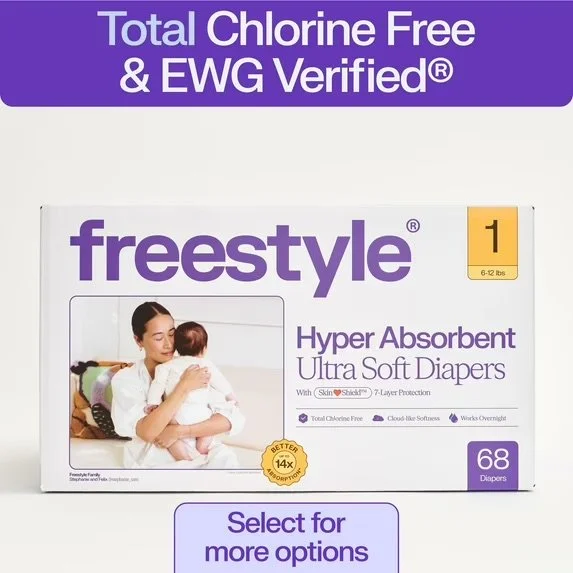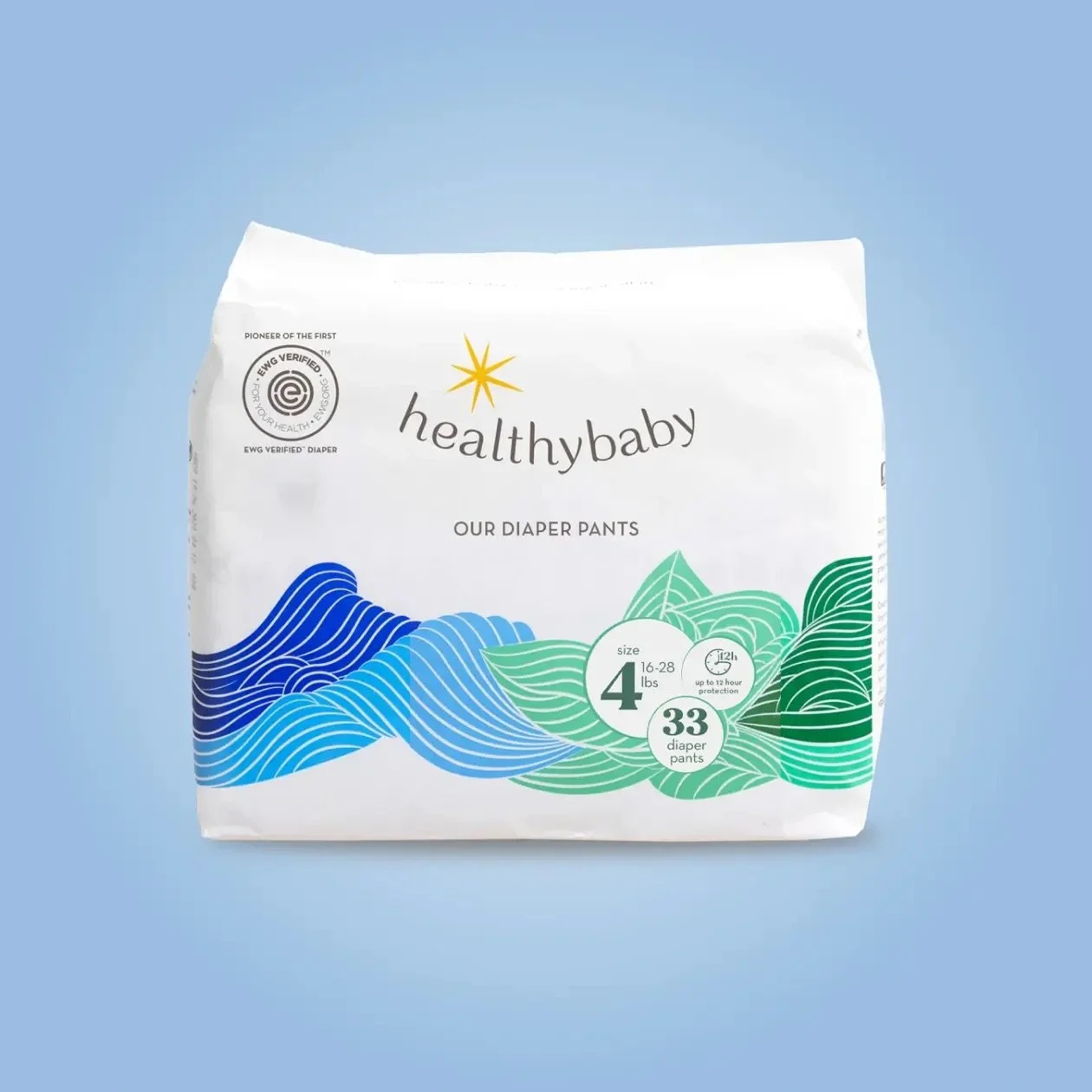The Ultimate Guide to Non-Toxic Diapers
The Ultimate Guide to Non-Toxic Diapers: What to Avoid & What to Buy
With so many diapers on the market, the choices can seem overwhelming. And when you start digging into what's actually in those diapers, it gets even more confusing—with terms like TCF, ECF, SAPs, and PFAS flying around, it's hard to know what really matters. But if you're here, it's probably because you care about what touches your baby's skin. In this guide, we break it all down: the materials, the certifications, the jargon, and the safest options out there—so you can make an informed, confident choice.
What Are Disposable Diapers Made Of?
Most disposable diapers have the same basic structure:
Top Sheet: This is the layer that touches your baby’s skin. It’s often made from polypropylene or polyethylene (plastics), though some brands use cotton or plant-based fibers.
Absorbent Core: Usually contains wood pulp and super absorbent polymers (SAPs), which are often synthetic materials, like sodium polyacrylate.
Back Sheet: This outer layer keeps moisture in and is generally made from waterproof plastic or plastic-like materials.
Elastic Bands, Adhesives, and Fasteners: These may contain latex, glues, or dyes.
*Because the top sheet is in constant contact with your baby’s skin, this material is especially important.
Why It Matters: The Case for Non-Toxic Diapers
Your baby wears diapers 24/7 during the first years of life, so exposure to harsh chemicals and plastics adds up. Conventional diapers can contain:
Chlorine-bleached pulp
Fragrance and dyes
Phthalates (used to soften plastics)
PFAS (a group of "forever chemicals")
These substances have been linked to a variety of health concerns, including hormone disruption, reduced immune system function, developmental problems in children, skin irritation. While the effects of diapers on babies specifically needs to be further studied, we do know that these “forever chemicals” accumulate inside the body. Therefore, choosing a non-toxic diaper is definitely a swap worth taking.
WBC Top Rated Diapers
What to Look For in a Non-Toxic Diaper
TCF vs ECF: What does it mean?
TCF (Totally Chlorine Free): No chlorine used in any part of the diaper bleaching process. This is the gold standard.
ECF (Elemental Chlorine Free): Uses chlorine dioxide instead of elemental chlorine gas. Safer than conventional methods, but not as clean as TCF.
*Look for TCF on the label to avoid exposure to dioxins, which are harmful byproducts of chlorine bleaching.
Certifications That Matter
Certifications help verify a brand’s claims. Key ones include:
OEKO-TEX Standard 100: Tests for harmful substances in textiles
FSC (Forest Stewardship Council): Ensures pulp is sourced sustainably
EWG Verified: Requires full transparency and avoidance of harmful chemicals
Dermatest Certified: Indicates the product is dermatologically tested
Third-Party Testing for PFAS and Phthalates
Look for brands that publish third-party lab results.
Additionally, independent testing (ie by Mamavation) can help confirm if a diaper contains fluorine, a marker for PFAS.
Avoid brands that are vague about ingredients or fail to mention independent testing.
Plant-Based and Non-Toxic Materials
Safer materials:
Cotton (organic or unbleached)
Bamboo (not viscose-processed)
Cornstarch or sugarcane-based liners
Water-based inks
Materials to avoid:
Polypropylene or polyethylene on skin-contact surfaces
Synthetic fragrances
SAPs in high quantities (although they are considered safe in low doses)
Dyes and colorants not verified for safety
Sustainability Factors
Sustainability doesn’t always mean more expensive—many clean brands now offer reasonably priced, planet-friendly options.
Biodegradable Components: Some diapers use bamboo or compostable back sheets
Compostable or recyclable packaging
Carbon-neutral manufacturing
Minimal plastic use
Fragrance-Free and Dye-Free
Artificial fragrances and dyes can irritate sensitive skin.
Choose diapers labeled "unscented" and avoid vague terms like "fresh scent" or "baby powder smell."
Summary: Key Terms and Checklist
SAP (Super Absorbent Polymer): Synthetic gel that absorbs liquid. Common and generally considered safe, but some parents prefer lower quantities.
TCF (Totally Chlorine Free): Choose this over ECF
Top Sheet: Inner layer that touches baby’s skin. Look for plant-based or cotton materials.
Back Sheet: Waterproof outer layer. Preferably made from biodegradable or compostable materials.
Phthalates: Chemicals used in plastics. Endocrine disruptors; avoid them.
PFAS: A group of "forever chemicals" linked to health issues. Hard to detect without testing.
Smart Label/QR Code: Some brands provide detailed info via QR codes on packaging—a sign of transparency.
Bottom Line: A good non-toxic diaper is transparent, TCF, fragrance-free, made with safe materials, and ideally eco-conscious. Look for third-party testing and meaningful certifications.
Still unsure? Check out our Non-Toxic Diaper Review Roundup for our top-rated clean diaper brands, with full ratings and safety breakdowns.
This page may contain affiliate links. This means that if you click on a link and make a purchase, I may earn a small commission at no additional cost to you. I only recommend products or services that I personally use or believe will add value to my readers.








Baby food ingredients aren’t the whole story. In this conversation, Sophie’s Organics founder Danielle Silver shares why the way baby food is made affects nutrition, flavor, and safety and why Sophie’s Organics stands out in every way.